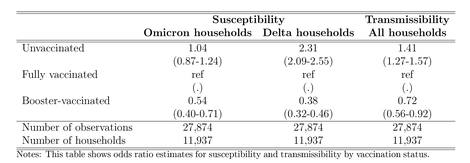Let’s begin with the limitations. It is a small study, still in preprint (not peer-reviewed) and looking at patients that are acutely symptomatic but not requiring hospitalization. The data are from South Africa, where the Omicron variant was rising or dominant. The study looked at PCR findings for samples taken from deep within both nostrils and the patient’s saliva. A quick word about the saliva sampling, it involved at least 30 seconds of swabbing the inside of the mouth, like a thorough visit to the dentist, and there was no eating, drinking, chewing, or smoking for 30 minutes beforehand.
COVID-19 was considered present if either swab was PCR positive; the variant was determined by whole-genome typing. The mean time from symptoms to PCR positivity was three days. When a patient was deemed positive – remember either sampling site was sufficient:
- For the Delta variant, the nasal sample was 100%, saliva 71%
- For the Omicron variant, the nasal sample was 86%, saliva 100%
“These findings suggest that the pattern of viral shedding during the course of infection is altered for Omicron with higher viral shedding in saliva relative to nasal samples resulting in improved diagnostic performance of saliva swabs.”
There are a number of theories as to what makes Omicron more infectious. The current interest has been on a study in cells that showed
- Omicron entering and replicating 70 times faster than Delta in cells from the upper respiratory tracts. This may be due to increased binding or some other factor, we just do not know.
- Omicron infected lung cells somewhat less than Delta or COVID original, but in line with influenza.
- At the same time, they found Omicron did not provoke the same intensity of response by “proinflammatory cytokines.” These are the chemical messengers which, when greatly enhanced, are associated with more severe respiratory manifestations and outcomes, i.e., the need for ventilators and more difficult hypoxia requiring extracorporeal membrane oxygenation (ECMO).
- The viral titers of Omicron took longer to develop initially than studies with the influenza virus. This is a stealth period when viral shedding from our airways occurs, but the viral load is insufficient to make us feel sick. Omicron shares with Delta the ability to be transmitted from asymptomatic individuals
Other Omicron mutations seem to allow it to evade our immune defenses a bit better than Delta – hence the push for boosters.
What remains true for Omicron and Delta is that they are transmitted through the air and transmitted by individuals who are not yet or never will be symptomatic. That is the strongest argument to be made for the use of physical barriers, the most effective of which is, dare I say again, masks. Are they wholly protective? Of course not, but they serve a purpose in our public versus private health response.
In our private lives, at home, masks are not commonly used. And that brings us to another study of Omicron, again a medRxiv preprint, looking at the transmission of Omicron and Delta within Danish households. The study was done for a two-week period in the last month and involved roughly 12,000 households. The variant that infected the first person in the household, as proven by a PCR test, classified the home as either Delta or Omicron. Subsequent household infections identified by PCR or antigens were counted along with the immunization status of the household members – unvaccinated, vaccinated, or boosted. The table summarizes their findings. Vaccinated patients were used as the reference in determining the odds of being infected.
 The unvaccinated had 41% more household transmission than the vaccinated, predominantly from the more severe Delta variant, and consistent with our finding that vaccination against Delta and Omicron is not wholly protective. The households with boosted individuals had a 28% less likelihood of transmission, again more so for Omicron. This makes a strong case for vaccination and a booster to protect those you live with. That will also reduce the number of asymptomatic individuals walking around shedding viruses.
The unvaccinated had 41% more household transmission than the vaccinated, predominantly from the more severe Delta variant, and consistent with our finding that vaccination against Delta and Omicron is not wholly protective. The households with boosted individuals had a 28% less likelihood of transmission, again more so for Omicron. This makes a strong case for vaccination and a booster to protect those you live with. That will also reduce the number of asymptomatic individuals walking around shedding viruses.
Source: Saliva swabs are the preferred 1 sample for Omicron detection medRxiv DOI: 10.1101/2021.12.22.21268246




